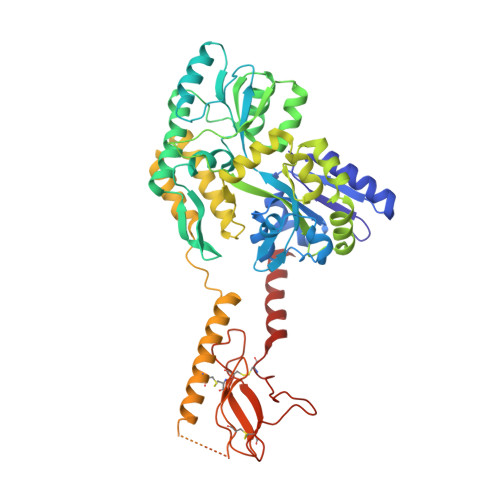Dimeric arrangement of the parathyroid hormone receptor and a structural mechanism for ligand-induced dissociation.
Pioszak, A.A., Harikumar, K.G., Parker, N.R., Miller, L.J., Xu, H.E.(2010) J Biological Chem 285: 12435-12444
- PubMed: 20172855
- DOI: https://doi.org/10.1074/jbc.M109.093138
- Primary Citation of Related Structures:
3L2J - PubMed Abstract:
The parathyroid hormone receptor (PTH1R) is a class B G protein-coupled receptor that is activated by parathyroid hormone (PTH) and PTH-related protein (PTHrP). Little is known about the oligomeric state of the receptor and its regulation by hormone. The crystal structure of the ligand-free PTH1R extracellular domain (ECD) reveals an unexpected dimer in which the C-terminal segment of both ECD protomers forms an alpha-helix that mimics PTH/PTHrP by occupying the peptide binding groove of the opposing protomer. ECD-mediated oligomerization of intact PTH1R was confirmed in living cells by bioluminescence and fluorescence resonance energy transfer experiments. As predicted by the structure, PTH binding disrupted receptor oligomerization. A receptor rendered monomeric by mutations in the ECD retained wild-type PTH binding and cAMP signaling ability. Our results are consistent with the hypothesis that PTH1R forms constitutive dimers that are dissociated by ligand binding and that monomeric PTH1R is capable of activating G protein.
- Laboratory of Structural Sciences, Van Andel Research Institute, Grand Rapids, Michigan 49503, USA. augie.pioszak@vai.org
Organizational Affiliation:


















